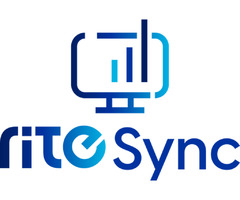Data centers serve as the backbone of todays digitally interconnected world. From hosting websites and cloud services to supporting critical business operations, the importance of data centers cannot be overstated. However, these mission-critical facilities are susceptible to downtime, which can result in significant financial losses and damage to a company's reputation. This is where predictive asset maintenance comes into play, presenting a powerful solution to maximize uptime and keep your data center running smoothly.
Understanding the cost of downtime The limitations of a traditional approach
Downtime in a data center is not just an inconvenience; it can be incredibly costly. Every minute of downtime can lead to lost revenue, reduced productivity, and dissatisfied customers. According to industry reports, the average cost of data center downtime is around $9,000 per minute, making it imperative for organizations to take proactive measures to minimize disruptions.
Historically, data centers have relied on a reactive approach to maintenance. When equipment failed or showed signs of deterioration, technicians would step in to fix the issue. While this method may have worked to some extent, it had its limitations. These include:
- Unpredictable downtime: Reactive maintenance often led to unplanned downtime, catching organizations off guard.
- Higher costs: Repairing equipment after a breakdown tends to be more expensive than addressing issues before they escalate.
- Decreased efficiency: Frequent interruptions for maintenance can disrupt operations and reduce overall efficiency.
Predictive asset maintenance as the solution
Predictive maintenance represents a paradigm shift in the data center industry. It's all about using data and technology to predict when equipment is likely to fail, allowing organizations to schedule maintenance tasks before a catastrophic breakdown occurs. Here's how it works:
- Data Collection and Analysis
The heart of predictive maintenance lies in data collection. Sensors and monitoring devices are installed throughout the data center to continuously gather information about the performance of critical equipment. This data is then analyzed using advanced analytics and machine learning algorithms to detect anomalies, patterns, and early warning signs of potential failures.
- Proactive Planning
Armed with insights from data analysis, data center managers can plan maintenance activities at optimal times, such as during scheduled maintenance windows or low-demand periods. This minimizes disruptions to ongoing operations and maximizes the efficiency of maintenance tasks.
- Cost Savings and Uptime Maximization
Predictive maintenance not only reduces the risk of unexpected downtime but also leads to significant cost savings. By addressing issues before they escalate, organizations can avoid the high costs associated with emergency repairs, replacement of critical components, and the impact of downtime on their bottom line.
Encouraging adoption
While the benefits of predictive maintenance in data centers are clear, encouraging the adoption of asset management software requires a strategic approach. This entails some of the following measures:
- Investment in Technology
Investing in the right technology infrastructure is essential. This includes deploying sensors, data analytics platforms, and a robust monitoring system. The initial investment pays off in terms of reduced maintenance costs and improved uptime.
- Training and Skill Development
Data center staff need the knowledge and skills to manage predictive maintenance systems effectively. Training programs and ongoing education are critical to ensure the technology is leveraged to its full potential.
- Data Security
Data security is paramount in data centers. When implementing predictive maintenance, it's crucial to ensure that data collected and analyzed remains secure and is not vulnerable to breaches or cyberattacks.
- Integration with Existing Systems
Predictive maintenance solutions should seamlessly integrate with existing data center management systems and protocols. This ensures a smooth transition and minimal disruption during implementation.
Conclusion
As we continue to rely on data centers to support our digital lives, the role of predictive maintenance becomes increasingly critical. It's not just about preventing downtime; it's about ensuring that data centers can meet the growing demands of the digital age. So, if you're looking to future-proof your data center and reap the rewards of uninterrupted operation, predictive maintenance is the way to go.
Embracing this technology requires investment in the right infrastructure, and the right solution provider. And with a leading technology partner like TMA Systems to provide you with key asset management software and services, you can witness your data center's uptime soar to new heights.
To find out more about how TMA Systems can leverage EAM asset management solutions to empower your data centers, click here for more information.


 Loading
Loading







